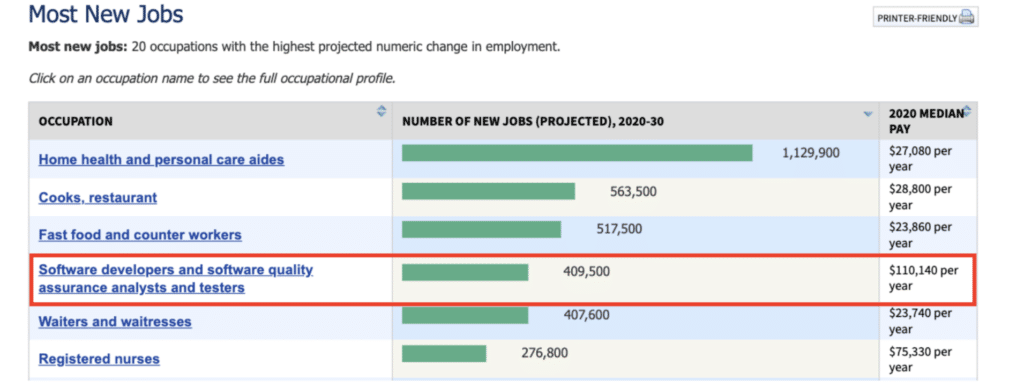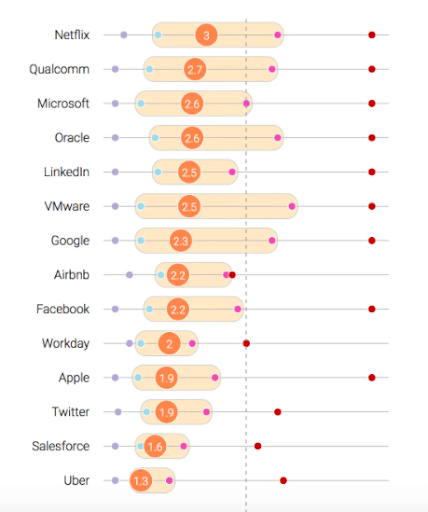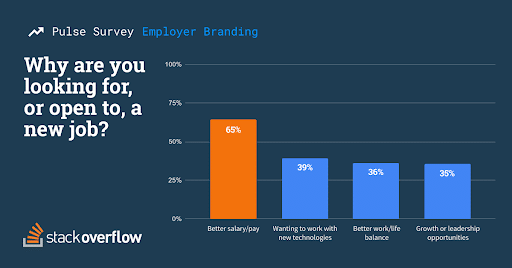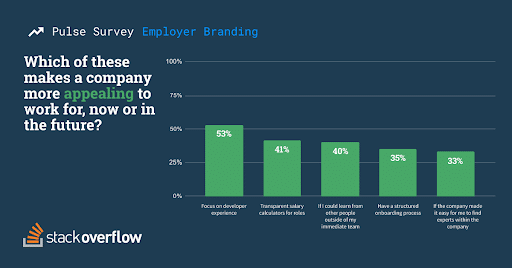Demand for developers is at an all-time high.
According to the U.S. Bureau of Labor Statistics, software developers, QA analysts, and testers will be among the top four in-demand jobs this decade, with nearly 200,000 hard-to-replace openings every year.

In plain English, this means that if you want to attract high-quality developers, tap into their full potential, and work with them for a long time, you must do everything you can to keep them happy.
The good news is that at Zartis, we know the key to a happy IT workforce: a great software team culture.
Here’s how to build one.
Why Does Software Team Culture Matter?
Developers change jobs every two years. That’s less than half the average national tenure in the U.S.

But that’s not all. It gets worse: At any one time, 20% of developers are actively looking at job adverts. Another 54% aren’t actively looking but are open to exploring new opportunities.
The numbers speak for themselves. You need to put in a lot of effort to keep your best-performing engineers around for a long time.
While a competitive salary is essential, money alone doesn’t cut it. Developers also seek exposure to new technologies, growth or leadership opportunities, and a better work-life balance — including options for remote work and flexible hours.

Crucially, more than one in two engineers say the number-one factor that makes a company appealing is a focus on developer experience.

It’s clear that company culture plays a big role in engineers’ decision-making when evaluating current and potential employers. To keep your development teams happy, you need to create the right environment for their needs.
What Makes a Great Software Team Culture
No two companies are alike, but the building blocks of a healthy organizational culture are relatively similar across the board. Most great companies share the following values:
- Trust
- Fairness
- Respect
- Continuous learning
- Room for mistakes and growth
- Empowering team members to take initiative
- Flat hierarchies where appropriate
- Inclusive environments
How to Build a Software Team Culture That Will Keep Developers Happy
Implement these best practices to create a healthy engineering culture, ramp up employee satisfaction, and keep developer attrition to a minimum:
1. Collect Feedback from the Team
Don’t be an autocratic leader. Instead of enforcing changes top-down, include developer teams in the decision-making process. Encourage open and frequent communication and set up protocols for collecting employee feedback regularly, such as:
- Informal peer-to-peer reviews
- Organization-wide surveys
- Performance reviews where engineers can give feedback to managers
Carefully consider all feedback and, where appropriate, act upon it.
2. Identify Team Values, Goals, and Needs
Individual team cultures vary both across and within organizations. To create an environment where developers thrive, you need to know what each team values and cares about in a job.
To do that, create safe spaces where team members are free to ask questions, provide feedback, and share their concerns. You may also consider sending out regular anonymous surveys. But most importantly, make sure to personally spend time with your team and individual employees, online or offline, to get to know them better.
3. Organize Activities to Strengthen Team Values
The best part about developing a team culture is that it doesn’t have to feel like work. Once you understand your employees’ values, you can reinforce them through fun team-building activities.
For instance, you could encourage collaboration and communication by organizing board game or pub quiz nights, sporting events, company retreats, and other informal employee experiences.
4. Analyze Your Processes and Implement Change
Building a software team culture isn’t something you do once. It’s a continuous process that requires you to inspect your workflows and business structure daily, keeping an eye on potential bottlenecks that may be hurting employee engagement and productivity. As soon as you detect a fresh opportunity for improvement, take action to eliminate anything that doesn’t align with the company culture.
5. Promote a Continuous Learning Culture
An important component of effective leadership is to provide opportunities for professional development. To that end, you should promote lifelong education by:
- Organizing trainings
- Enabling self-directed learning
- Encouraging cross-functional team collaboration
- Fostering a knowledge-sharing culture
By investing in employee development, you’re less likely to lose high-performing team members to competitors.
Finding the Right People
The above tips will only work if you join forces with people who have the right mindset and are a good culture fit for your company. This applies to in-house developers but more so to remote employees and any outsourcing partners where implementing your internal company culture can be trickier.
Hiring the Right Software Developers
Always look for flexible, open-minded, and collaborative individuals who are also good communicators. Believe it or not, soft skills like these are more important than tech skills. Hard skills can be perfected, but core personality traits and ingrained behavioral patterns are very hard to change.
Another good rule of thumb is to look for developers working in agile, cross-functional environments with a similar software team culture. You also want people who are reliable, consistent, and with a proven history of not changing jobs every year.
Choosing the Right Outsourcing Partner
Before reaching out to potential partners, you must first decide whether you want nearshore or offshore outsourcing. This will largely depend on whether you’re looking to collaborate closely with the remote team or outsource a project or part of a project fully.
Other key questions to ask outsourcing providers are:
Can They Tailor Their Services to Meet Your Requirements?
Your needs will likely change as your project and business evolve. Good outsourcing partners are flexible, cooperative, and able to adapt their services over time — such as the collaboration model, team size, or team structure — to deliver custom solutions.
Have They Worked on Similar Projects?
If a vendor has developed similar software in the past, you can eliminate the downtime of getting acquainted with your needs and project specifications. The best way to find out is by requesting case studies or success stories, client testimonials, or references.
What’s Their Approach to Recruitment and Continuous Education?
Before partnering with an outsourcing vendor, you want to ensure their developers are reliable. Is the recruitment process rigorous enough? Are candidates asked to do a test or peer coding challenge? Once hired, do they have access to continuous learning and training? You should also have the final say in who joins your team.
Working with Zartis Dedicated Software Teams
Software team culture development is hard enough for you to also worry about hiring for cultural fit. If you don’t have the time, budget, or resources to do it in-house, leave that to us.
At Zartis, we specialize in assembling world-class remote software teams. Our secret? Well-thought-out recruitment and onboarding. We carefully evaluate candidates’ tech skills and domain expertise, pay special attention to the culture fit, and work closely with you to onboard new hires so that they can hit the ground running.
The result? Our clients see a whopping 90% developer retention rate.
Contact us today to find the ideal engineers for your software team culture.

